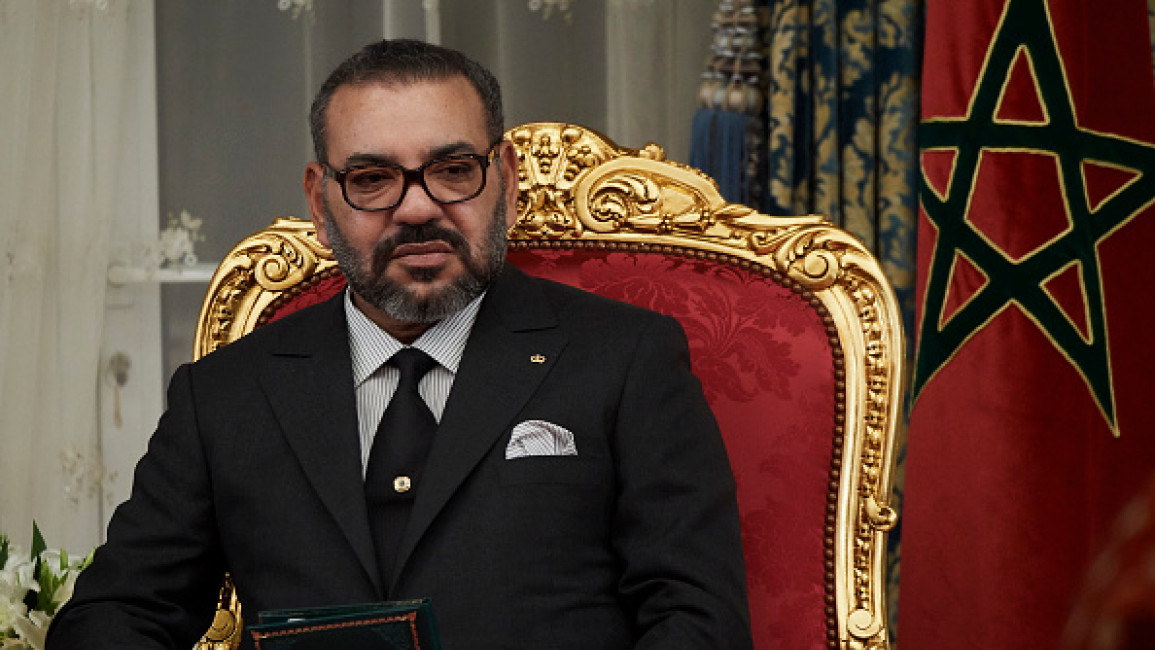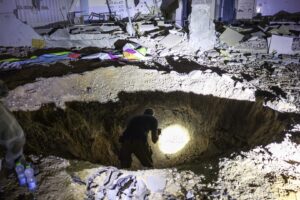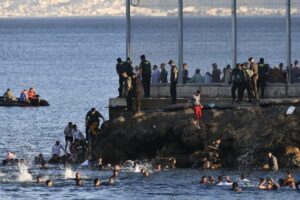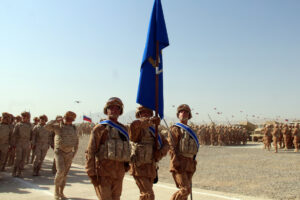During her five decades away from the Atlas Mountain village where she grew up, Saffiya, a Moroccan Amazigh, had grown accustomed to not having her identity fully recognised by her own nation.
But on 3 May, Saffiya said she felt more seen as she watched the only Amazigh-speaking channel in the country broadcast the palace’s announcement of the recognition of the Amazigh New Year (Idh Yennayer) as an official holiday in Morocco.
“When they will tell my grandsons to not come to school because it’s the Amazigh New Year, they will feel acknowledged by their own nation, they will understand that the dishes I cook for them and the stories I tell them about their ancestors are real and not just their grandmother being delusional,” said Saffiya laughing.
The Amazighs are considered the indigenous people of North Africa and trace their presence back millennia, before the Arab and Islamic conquest in the 7th century. Estimates vary about the number of Moroccans who claim Amazigh heritage, with some as high as 70 percent.
It was only in 2001, however, that Mohammed VI, the newly coronated king at the time, recognised Amazigh culture as part of the country’s national patrimony.
“The Amazighs are considered the indigenous people of North Africa and trace their presence back millennia”
Named the ‘Ajdir speech’, the royal discourse was hailed as a turning point in the Moroccan state’s policy vis-a-vis the community.
Nevertheless, it took another decade to recognise Tamazight as an official language in 2011, and a further twelve years to assign Idh Yennayer as an official holiday.
But why has progress been so slow in granting Amazighs the national visibility that they have longed for? A look at reactions on social media in the aftermath of the most recent announcement provides some insight.
“What prevents other peoples from reclaiming their pre-Islamic festivals and traditions is that we will lose the factor of our unity, and the future of our children is wasted,” wrote Hassan El-Katani, a renowned Islamic Moroccan scholar known for his anti-Amazigh statements.
“Unfortunately, we have become a country that is neither guided by religion nor united by language, after we abandoned Islamic law and the Arabic language.”
In a Facebook post, the Islamist scholar doubled down on his statements, sharing claims that the Amazigh calendar is not historically accurate and that the history of Amazighs in Morocco is filled with “imaginative events”.
Comments of people sharing the same theory flooded the scholar’s post leading to a heated discourse with the same argument; is it Islamically acceptable to celebrate the Amazigh new year?
Ahead of the Gregorian calendar by 950 years, the Amazigh calendar’s first day falls on 13 January each year. Other Amazigh communities in Tunisia, Algeria, Libya, and Egypt start Yennayer celebrations on 12 January.
Historians are divided about the origins of ‘Idh Yennayer’. One group believes that the choice of 13 January symbolises the celebration of land and agriculture, while others say that the day commemorates the Amazigh king Chachnak’s victory over Egyptian pharaoh Ramses II.
“While other populations chose the arrival of a person as the start of their calendar as in Christians and Muslims, Amazighs chose the start of the agricultural year because they highly value their land,” Moroccan Amazigh scholar Ahmed Aassid said in a recent interview.
Known as ‘Idh Ynnayer’, ‘Idh Skas’, or ‘Hakouzah’, the names differ depending on each region and the celebratory dishes involved, which can include the ‘Orkemen’ dish, ‘Takla’ porridge, and ‘Imshikhen’, or ‘couscous with seven vegetables’.
“It’s a call for taking care of natural resources and protecting the environment because the Amazigh year is an agricultural year that invites us to celebrate the bounties of the earth,” Adil Adaskou, a Moroccan Amazigh activist, told The New Arab.
Since 2001, the prime ministers of Morocco have not been able to officialise the Amazigh celebration.
“Only the King can take such a decision,” officials from the Islamist ruling majority have said repeatedly during their two decades of rule (2001-2021).
“Though a long-awaited decision, recognising the Amazigh New Year is only part of the community’s ongoing fight for visibility”
Since 2011, the Moroccan constitution has granted the government greater authority, though it has always been reluctant in reacting to controversial issues, especially religious ones.
As the ‘Emir of believers’, the Moroccan king has maintained a legacy of intervening in such situations, promoting a more or less progressive policy.
“This decision has a strong political symbolism represented in the role of the king in managing sovereign matters related to the identity of the supreme Moroccan state, and one of its identity implications is the return of Morocco to itself and its ancient history,” Moroccan Amazigh activist Adil Adaskou told TNA.
Though a long-awaited decision, recognising the Amazigh New Year is only part of the community’s ongoing fight for visibility.
Amazigh rights
Frantz Fanon, the Martinique-born philosopher, revolutionary, and leading pan-Africanist, once wrote: “I ascribe a basic importance to the phenomenon of language. To speak means to be in a position to use a certain syntax, to grasp the morphology of this or that language, but it means above all to assume a culture, to support the weight of a civilization”.
Speaking to several Amazighs activists, the implementation of Tamazight in Moroccan schools and administrations tops the list of their demands.
Over a decade since the officialisation of Tamazight in the country, the teaching of the language is still burdened by bureaucratic and state negligence.
Historically, Tamazight was spoken from the Canary Islands to Egypt, but today, the number of speakers continues to decline.
It is Morocco that now holds the majority of the Tamazight-speaking population, with estimates of 60-80% of the population speaking the language.
 It was only in 2001, that Mohammed VI, the newly coronated king at the time, recognised Amazigh culture as part of the country’s national patrimony. [Getty] It was only in 2001, that Mohammed VI, the newly coronated king at the time, recognised Amazigh culture as part of the country’s national patrimony. [Getty] |
In the past, UNESCO have said that Tamazight speakers have been “discouraged from using their own language” and that government policies “were adopted that accelerated its decline”.
Since the early 2000s, the Royal Institute of Amazigh Culture (IRCAM) has tried to standardise the language based on the different Amazigh dialects in the country
Amazigh activists say that the state’s policy is lukewarm at best, with the teaching of Tamazight in Moroccan schools far from widespread.
“So far, the state professionally [employs] only 200 Tamazight teachers yearly, this number is not enough to seriously implement the language in Morocco,” Adil Adaskou, a Moroccan Amazigh activist, told TNA.
Traditionally, Amazigh has been learned and passed from generation to generation through families where it is spoken as a mother tongue. Having this as the sole form of transmission has severely harmed Tamazight’s status in the country.
“Estimates vary about the number of Moroccans who claim Amazigh heritage, with some as high as 70 percent”
Nevertheless, Amazigh activists are content that their years-long journey for visibility has succeeded in bringing their cause to the forefront not only in Morocco but also in the wider MENA region, which has referred to the community as Arabs for decades.
In Algeria and Tunisia, meanwhile, the Amazigh struggle has been undercut by a discourse where discrimination is disguised as maintaining the “unity of the nation”.
“The Moroccan state has today reached the conclusion that it cannot stand on the sole leg of pan-Arabism and that we have to embrace all the identities of our society to not be a deformed nation,” said Moroccan Amazigh activist Ahmed Aassid after the recent recognition of Idh Yennayer.
Source : The New Arab
















